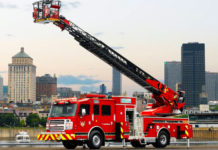Earlier this year, a Florida man pled guilty to threatening to firebomb two mosques. A Virginia man was charged with assaulting a gay victim. And an Iowa man was convicted of stomping on and kicking the head of an African-American victim.
Hate crimes like these can have a devastating impact upon the communities where they occur, which is one of the reasons why the investigation of hate crimes that fall under federal jurisdiction is the number one priority under the FBI’s civil rights program.
But in addition to its investigative work, the FBI gathers and publishes—through its Uniform Crime Reporting Program—hate crime statistics from law enforcement agencies across the country to help provide an accurate accounting of the problem, by state and nationally.
And today, the Bureau released its latest Hate Crime Statistics report—this one containing data for 2015—that includes information detailing the offenses, victims, offenders, and locations of hate crimes. The 2015 collection marks the 25th anniversary of the Bureau’s work to compile data about bias-motivated crimes, which began in 1990.
This year’s report, which contains data from 14,997 law enforcement agencies, reveals 5,850 criminal incidents and 6,885 related offenses that were motivated by bias against race, ethnicity, ancestry, religion, sexual orientation, disability, gender, and gender identity.
This year’s collection marks the 25th anniversary of the FBI gathering and publishing data about bias-motivated crimes. The first publication in 1990 included limited data from only 11 states.
The collection has grown each year into the wide-ranging report presented today. Submitted by 14,997 law enforcement agencies across the nation, the 2015 data provide information about the offenses, victims, offenders, and locations of hate crimes; however, the UCR Program does not estimate offenses for the jurisdictions of agencies that do not submit reports. Highlights of Hate Crime Statistics, 2015, follow.
Law enforcement agencies submitted incident reports involving 5,850 criminal incidents and 6,885 related offenses as being motivated by bias toward race, ethnicity, ancestry, religion, sexual orientation, disability, gender, and gender identity in 2015.
Victims of Hate Crime Incidents
- There were 5,818 single-bias incidents involving 7,121 victims.
- A percent distribution of victims by bias type showed that 59.2 percent of victims were targeted because of the offenders’ race/ethnicity/ancestry bias, 19.7 percent were targeted because of the offenders’ religious bias, and 17.7 percent were victimized because of the offenders’ sexual-orientation bias.
- Victims targeted because of the offenders’ bias against gender identity accounted for 1.7 percent of victims of single-bias incidents; disabilities, 1.2 percent; and gender, 0.4 percent. (Due to rounding, percentage breakdowns may not add to 100.0 percent.)
- Thirty-two multiple-bias hate crime incidents involved 52 victims.
Offenses by Crime Category
- Of the 4,482 hate crime offenses classified as crimes against persons in 2015, intimidation accounted for 41.3 percent, simple assault accounted for 37.8 percent, and aggravated assault for 19.7 percent.
- Eighteen murders and 13 rapes (12 from agencies that collected data using the revised definition of rape) were reported as hate crimes.
- Beginning with the 2013 data collection, the UCR Program’s revised definition of rape is “penetration, no matter how slight, of the vagina or anus with any body part or object, or oral penetration by a sex organ of another person, without the consent of the victim.” [This includes the offenses of rape, sodomy, and sexual assault with an object as converted from data submitted via the National Incident-Based Reporting System (NIBRS).
- The UCR Program’s legacy definition of rape is “The carnal knowledge of a female forcibly and against her will.”
- There were 2,338 hate crime offenses classified as crimes against property.
- The majority of these (72.6 percent) were acts of destruction/damage/vandalism. Robbery, burglary, larceny-theft, motor vehicle theft, arson, and other offenses accounted for the remaining 27.4 percent of crimes against property.
- Sixty-five additional offenses were classified as crimes against society, which were collected via NIBRS. This crime category represents society’s prohibition against engaging in certain types of activity such as gambling, prostitution, and drug violations. These are typically victimless crimes in which property is not the object.
Known Offenders
- In the UCR Program, the term known offender does not imply that the suspect’s identity is known; rather, the term indicates that some aspect of the suspect was identified, thus distinguishing the suspect from an unknown offender.
- Law enforcement agencies specify the number of offenders and, when possible, the race of the offender or offenders as a group.
- Beginning in 2013, law enforcement officers could also report whether suspects were juveniles or adults, as well as the suspect’s ethnicity when possible.
- Of the 5,493 known offenders, 48.4 percent were white, and 24.3 percent were black or African-American. The race was unknown for 16.2 percent.
- Other races accounted for the remaining known offenders: 1.0 percent were Asian; 0.9 percent were American Indian or Alaska Native; 0.1 percent were Native Hawaiian or Other Pacific Islander; and 9.1 percent were of a group of multiple races.
- Of the 3,421 known offenders for whom ethnicity was reported, 25.7 percent were not Hispanic or Latino, 6.1 percent were Hispanic or Latino, and 1.6 percent were in a group of multiple ethnicities. Ethnicity was unknown for 66.6 percent of these offenders.
- Of the 3,331 known offenders for whom ages were known, 84.7 percent were 18 years of age or older.
Locations of Hate Crimes
Law enforcement agencies may specify the location or an offense within a hate crime incident as one of 46 location designations.
In 2015, most hate crime incidents (31.5 percent) occurred in or near residences/homes; 17.4 occurred on highways/roads/alleys/streets/sidewalks; 8.3 percent occurred at schools/colleges; 5.6 percent happened at parking/drop lots/garages; and 4.4 percent took place in churches/synagogues/ temples/mosques.
The location was reported as other/unknown for 11.0 percent of hate crime incidents. The remaining 21.8 percent of hate crime incidents took place at other or multiple locations.
Importance of Reporting Hate Crime Data
In 1990, Congress passed the Hate Crime Statistics Act, which required the attorney general to collect data “about crimes which manifest evidence of prejudice based on race, religion, sexual orientation, or ethnicity.” The attorney general delegated the responsibility to the Director of the FBI, who, in turn, assigned the task to the Bureau’s Uniform Crime Reporting (UCR) Program.
Since then, additional categories have been added in an effort to improve the quality of the data collected. The more detailed we can be with the collection, the better all of law enforcement can detect trends and add necessary resources to combat these crimes.
But the FBI’s annual Hate Crime Statistics report is only as good as the information it contains, and increased participation from law enforcement agencies will provide a more complete picture of hate crime in America.
 Recently, the International Association of Chiefs of Police—with the assistance of the Anti-Defamation League—issued a model policy for law enforcement agencies around the country on the investigation of hate crimes.
Recently, the International Association of Chiefs of Police—with the assistance of the Anti-Defamation League—issued a model policy for law enforcement agencies around the country on the investigation of hate crimes.
The IACP also encouraged each agency to develop a standard for collecting, analyzing, and reporting incidents of hate crime—and, in particular, to submit monthly reports on all hate crime occurrences to the UCR Program.
According to FBI Director James Comey, “We need to do a better job of tracking and reporting hate crime to fully understand what is happening in our communities and how to stop it.”
Full Report: Hate Crime Statistics, 2015
















